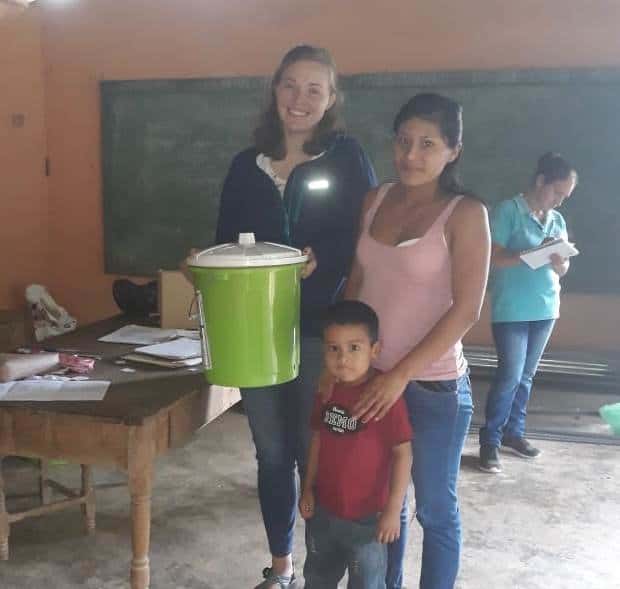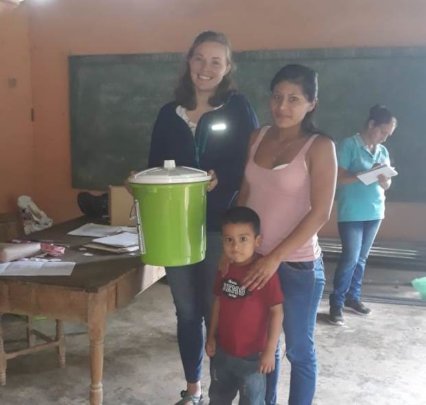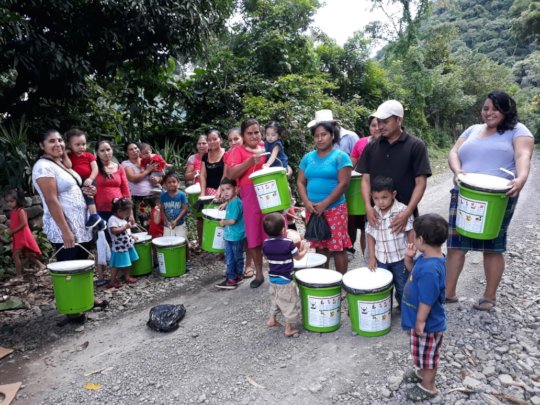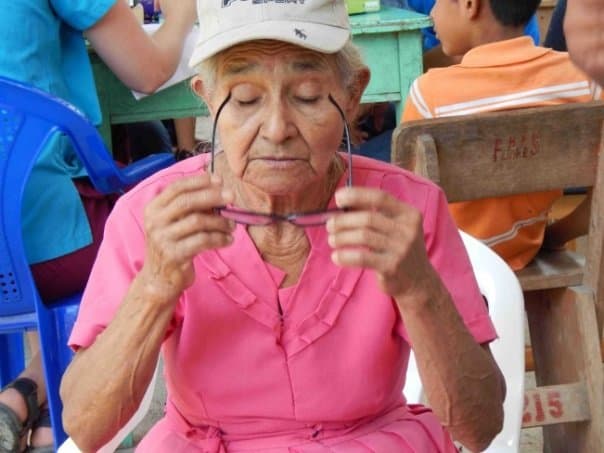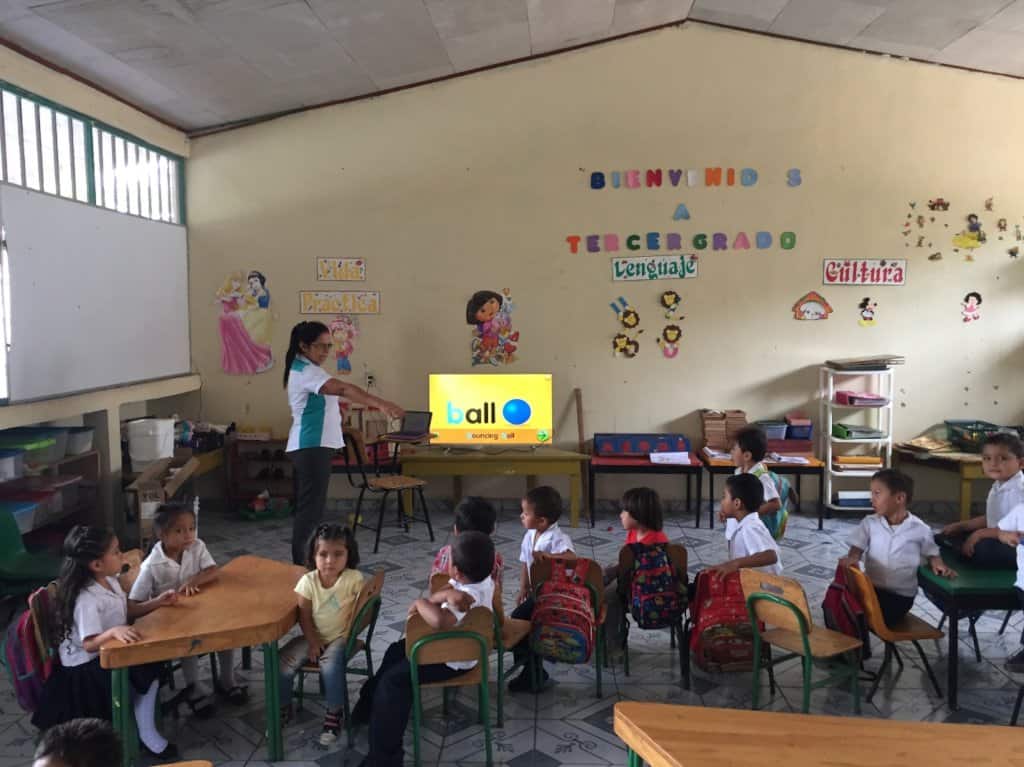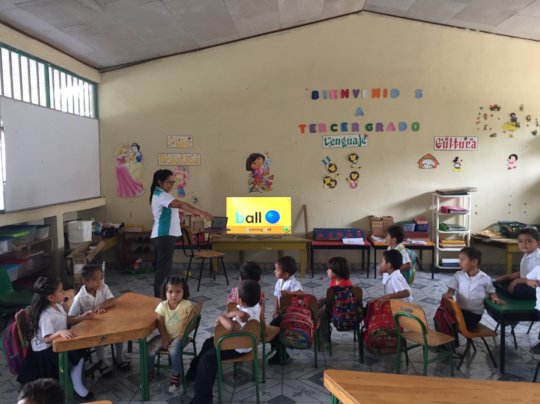Honduran Implementation of Kolibri
The attached video shows Kolibri in action in Guatemala.
The day was Monday, April 8, 2019, towards the end of a 10-day assessment of our Kolibri Implementation Project, through our education mission, CREE. CREE stands for Regional Center for Educational Excellence.
We start out from Camasca, Shoulder to Shoulder’s Educational Headquarters. Camasca is one of seven municipalities that comprise the StS service area, and the central municipality. These towns are located in the middle of Southern Intibucá, on the border with El Salvador. This area is part of a UN designated area of extreme distress where farmers eke out an existence among steep terrain with poor soil where yields are getting worse as the climate warms and becomes drier.
High School
This day our visit was to the municipality Colomonguaga where we work in the center of town, as well as in a village of the town called Santa Ana. “Colo” is about an hour’s drive over very bumpy roads from Camasca; Santa Ana another half hour down roads even more severe. My activity monitor records over 10,000 steps for the ride out and back. The going is slow and fatiguing as we bump over large rocks or jostle through drainage ditches in the roadbed. I feel at times as though walking might have been easier.
On the way to the High School, we met the Director. He is a distinguished looking older gentleman who has been at this school for decades. My staff shared that he is not generally in favor of technology and does not have a computer or cell phone. He declined an earlier request to allocate a secure unused science lab space for use by Kolibri. This left the teacher with only a rotating classroom in which to teach math and begin with Kolibri.
When we started with the high school in March 2018 the only equipment we had available for Colo was a server. Our objective was to let the teacher learn the system and the team would return at a later date with additional equipment. Our usual method is to begin with “presentation mode”. This consists of a server and display device, usually a projector; sometimes a large screen TV. The team monitors the progress of the teacher’s learning curve and requires the creation of lessons and student user names with passwords before they return with tablets.
In the case of Colo, the team’s reconnaissance trip a week earlier found an example of Honduran resourcefulness that led them to bring tablets for the class this day. What they found is that the teacher, Veronica, had found a router locally and attached it to the server. She then arranged her class into four-desk clusters and found enough students that could bring in cell phones so that she could utilize Kolibri to deliver Khan Academy videos.
We get a tour of the school including the science lab. After some discussion with the Director he agrees to give Veronica the use of the Science Lab!! It is a good space with secure door and windows. We move the equipment into this room. The Colo High School, like most secondary schools, operates double shifts, so our tablets will get plenty of use, about 500 students most days; plus an occasional chicken.
Kindergarten
Our next stop is to a Kindergarten which is only blocks from the colegio. Here our team has collaborated with a local teacher to install two large Android tablets with HDMI connection, loaded with Starfall and other Apps aimed at teaching English letters and sounds, numbers and colors. This teacher was able to successfully solicit World Vision for the donation of two large screen TV’s.
English language instruction is a Honduran government priority and accordingly ours. We have currently included a total of four Kinders with this experiment along with our bilingual school in Camasca and various other teaching aids in primary schools and junior highs.
Centro Basico (Junior High)
The Centro Basico is the Honduran government’s new strategic effort to get more of the population to stay in school beyond the sixth grade. These are 7,8 & 9 grade additions to the primary schools, located close enough for walking. They are at best taught by one teacher per grade. Some of our CEB’s are small and have only one teacher for all three grades! The CEB’s are the focus of our Kolibri grant installations. In addition to Khan Academy, we are deploying our new CREE channel which features the digital Honduran textbooks.
Our next stop is to visit the Santa Ana CEB, and one of our Kolibri grant recipients. This school has been running presentation mode and is about ready for tablets. He then works the teachers through signing on with their cell phones for practice.
At the conclusion of this training, the team agrees that they are now ready for tablets. The team decides to try out having this school come and get the tablets from our base in Camasca and configure them for themselves. In another municipality they are trying out a still more aggressive version of self installation and local suppport that if successful will facilitate further scalability with our limited staff.
It was quite a satisfying, yet also exhausting day!!
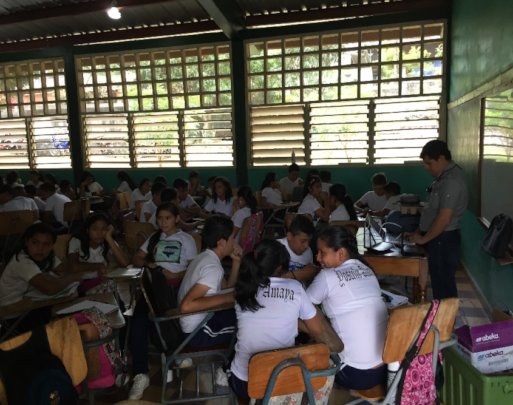
High School Students Working in Groups of Four
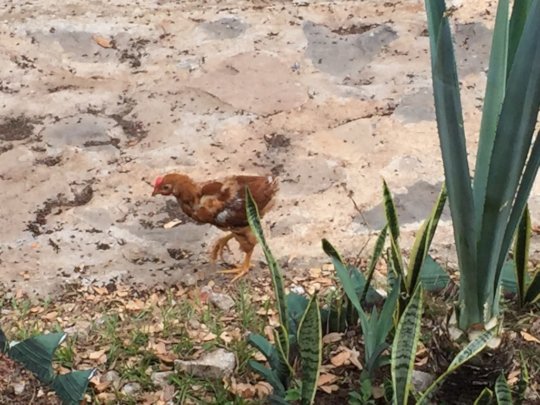
Chickens Visit Classrooms Occasionally!


